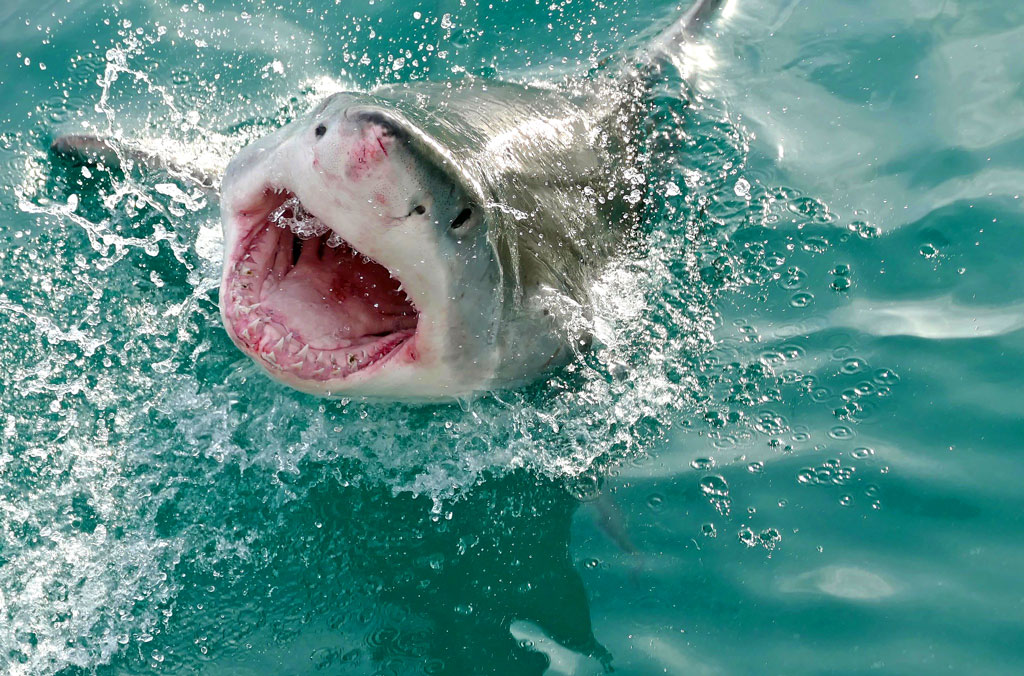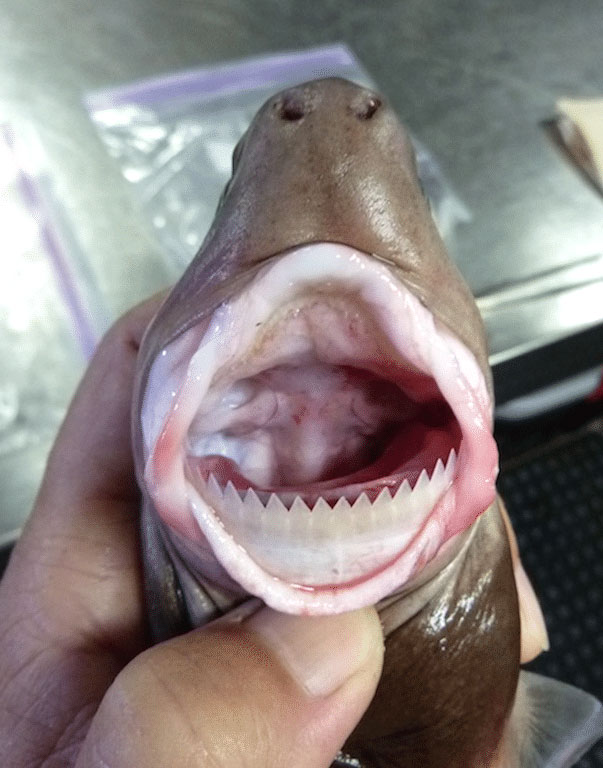If you’re curious about a shark’s tongue, its purpose, its structure, and its functioning mechanism, delve deeper into this article.
Yes, sharks do have tongues. A shark’s tongue is a piece of cartilage located on the floor of its mouth and is called a basihyal. This is a bar-like structure and it runs down the midline of a shark’s chest.

What do sharks use their tongues for?
A shark’s tongue is not a muscle so it cannot move the way, say, a human tongue makes motion. So it is believed by scientists that a shark’s tongue originally evolved to offer protection. The ventral aorta, which the tongue protects, is an extremely vital part of a shark’s anatomy as it carries deoxygenated blood from the heart to the gills. Since the ventral aorta is located very close to a shark’s mouth it is essential to safeguard it from large chunks of food.
That, however, is not the only purpose of a shark’s tongue. A shark also uses its tongue to tear apart its prey and remove chunks of flesh from the body. Though the movement of the tongue is minimal, whatever little role it plays in tearing into the flesh of the prey is important.

What exactly the tongue is used for varies from species to species. In most sharks, it might not serve vital purposes but in some species, with a larger and flattened basihyal, sharks can use their tongues to suck up prey with the assistance of intensely powerful throat muscles. Three main species of sharks use their tongues in a highly useful manner: carpet sharks, cookiecutter sharks, and bullhead sharks. These are animals that can create a vacuum inside their mouth and suck up their prey easily. In fact, the cookiecutter shark is indeed a cutter and has a sharp enough tongue to rip the flesh of its prey!
Now that it’s confirmed that sharks have tongues and they serve essential purposes, let’s explore a few more questions you might have regarding a shark’s tongue.
What are the differences between the tongues of sharks and humans?
On the surface, a shark’s tongue might look slightly similar to a human being’s tongue. However, there are certain major differences that clearly set apart the two.
- A shark’s tongue has no taste buds. The average human being has around 10,000 taste buds, most of which are located on the tongue.
- A shark’s tongue is not muscular which means that it cannot have the kind of motion that our tongues do. There is a very limited movement a shark’s tongue can make.
- The surface of a shark’s tongue is far rougher and sharper than that of a human tongue. After all, they don’t need to soften a cookie to chew it properly; they have to rip out flesh.
Do sharks bite their tongues?
Everyone is afraid of a shark’s teeth – whether it’s the creatures living in the sea or roaming the land. But what about the shark itself? Does it ever accidentally harm itself with its teeth? With such sharp and dangerous teeth, what if it bites its tongue?
With their muscle memory and just the physical way the mouths, teeth, jaws, and tongues of sharks are created, it is unlikely that sharks intentionally bit their tongues. Their jaws might be powerful and their teeth sharp, but it can be a survival instinct that stops them from biting their tongues off. However, regarding such carnivores with sharp teeth, it is said that if their mouths are anesthetized, they can unknowingly chew out their tongues and have a mouth full of blood. Yikes.
Can sharks stick their tongues out?
For the majority of shark species, this is not possible. Sharks cannot stick their tongues out. Their tongues simply do not have that kind of length or placement in the mouth. Most sharks do not need their tongues to catch their prey or grip its body. They just want to create a vacuum to pull in their food. This does not require them to have a tongue long enough to be stuck out of the mouth.
Can sharks taste with their tongues?
No, sharks cannot taste with their tongues. As mentioned above, there are no taste buds on a shark’s tongue. Then how does a shark decide what it wants to swallow and what needs to be avoided?
The taste buds of sharks are found on the papillae lining. They taste food with the papillae lining located on their mouth and throat.
That being said, sharks are very intelligent creatures and can adapt surprisingly well to their surroundings. Depending upon the species, sharks can be carnivores, herbivores, or omnivores. But if they cannot find suitable food, they will make do with what is available considering they like the taste. This is why in most shark attacks, they only bite the human and not try to eat or swallow the person. This is because, it is believed, that sharks do not recognize the taste of a human as food.
So rest assured because sharks do not even find us delicious. Our chemical composition does not make for a favorable meal for them. This is partly because our diet does not consist of seafood much and partly because we are too lean and not fleshy enough for a shark to be able to satiate its hunger with our bony bodies. That’s a relief!
Conclusion
Hopefully, you are now well-aware that sharks have tongues as do most species of fish. However, these are not exactly the same as humans and many mammals do. Likewise, they do not perform the same functions as our tongues do.

Lydia King is a huge animal lover and has always been fascinated with learning about the animal kingdom. She enjoys writing about anything animal related from scientific information about rare species to animal references in pop culture.












